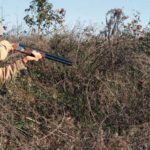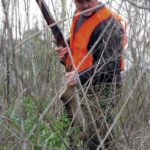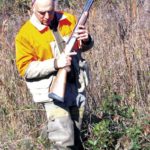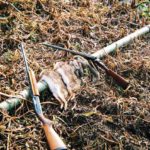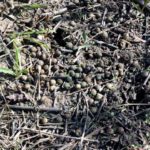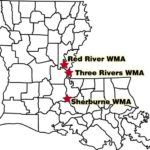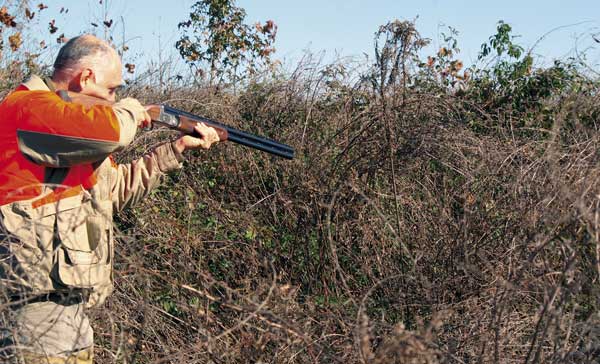
Put on your walking boots, and kick up a mess of rabbits on these three WMAs.
Growing up in Michigan, I cut my hunting molars beginning with rabbits. I often like to say that Michigan is the Sportsman’s Paradise north, but only as a close runner-up to the one here in the south — especially where rabbits are concerned. Sure, my old North Country haunts have snowshoe hares and eastern cottontails, but here in Louisiana we have two species also — the eastern cottontail and its bigger cousin, the swamp rabbit. It’s the wily swamp rabbit that most hunters will be chasing, according to Louisiana Department of Wildlife and Fisheries biologist Fred Kimmel.
“Swamp rabbits have a pretty big range from the coastal areas all the way up to the swamps and bottomland hardwoods throughout the state,” Kimmel said. “There may be a few eastern cottontails, but what’s there is primarily going to be swamp rabbits.”
With an average weight of a little over 4 pounds, swamp rabbits are bigger than eastern cottontails. Additionally, their coloration is darker by comparison, and quite simply, swamp rabbits are masters of stealth.
With eyes set on the sides of their heads, they see you before you see them. With ears designed to pick up every sound like a Patriot Missile System picks up approaching danger, they know the instant your boot hits the ground.
The problem most people have is the tactics they employ. Next, they think they are readily going to take limits walking them up. In reality, anything with two legs trying to chase things with four legs is going to lose. At the end of the day, I’ll bet on the four-legged creature.
That’s not to say that taking a limit of swamp rabbits is impossible when walking them up, but much of it depends on the population density of the area you’re hunting. Moreover, it also depends on if that area has been hunted before with or without dogs and being sure you hunt it correctly.
Each winter, when the deer and duck hunters are finally finished with the woods and marshes and before my sons and I put away our guns, we make a few rabbit hunts. It was those tactics learned in the North Country that have become tried and true methods for ensuring we come home with swamp rabbits for the pot and yes, occasionally, a limit or two to put some up in the freezer as well.
Recently, I made a trip “up north” by crossing I-10, and headed to Sherburne Wildlife Management Area for a scouting trip and a change of scenery from my familiar marsh canal banks.
The WMA didn’t have the vast expanse of prime rabbit habitat that much of the coastal marsh has, but it did have the better-looking low ground cover that I prefer to hunt in.
LDWF Region 6 Manager, Tony Vidrine said, however, that thickets can be found.
“The main highway that goes through Sherburne is Highway 975,” he said. “If you drive along it, you’ll pass several areas that have been cut — you can see them from the road — that have a little bit thicker understory. Rabbit hunters usually look for thicker areas, and that’s where you’re going to find them.”
Several of the areas I found were around the dove and birddog training fields that the DWF manages. Though some of the thickets were impassable, I focused on the lower, knee-high areas that also had grassy vertical cover where rabbits feed.
Rabbits will feed in the grassy cover munching on succulent wild clovers, blood weed, briars and other woody plants. With thick cover close by to dive into, getting them out presents the biggest challenge for the dogless hunter.
Knowing your limitations is the first thing to bear in mind when you find suitable cover. Nothing can be more discouraging than getting worn out after the first thicket or two and coming up empty-handed.
Those limitations also depend on the number of hunters in your party. Going solo in a patch of briars will produce the occasional rabbit, but a duo increases your chances, and a party of three or four can do some real good in rooting out ol’ Brer rabbit.
Pre-conditioning rabbit cover by cutting or burning shooting lanes prior to the hunt helps by opening it up for clearer shots. Since pre-conditioning isn’t allowed on WMAs, hunters need to set up a patch of cover with standers and walkers to force rabbits out into the best openings possible. Openings may be bush-hogged field edges, drainage ditches that intersect fields, low grass between thickets and even game trails, where deer have passed.
Blaze orange is mandatory on all WMAs, but it’s a good practice to wear it on private land as well, especially where standers and walkers are working together.
Don’t be in a hurry to bust some cover and move on. If you’re in a hurry, you won’t jump many rabbits, reducing your harvest opportunities instead of maximizing them.
When a rabbit knows you’re in its cover, it has two choices — one, to hold, and two, to beat feet in full afterburner. If it decides to hold tight, you seemingly have to step on it make it move. If it decides to run, it will run behind you, just as you’re walking past. Those that bust out of cover toward your standers are the ones that make it into the pot on the stove.
How you walk is an important tactic that is imperative to success. Be sure to walk all of the cover. Walk it slowly — very slowly — in a zigzag fashion. If you don’t jump a rabbit, go back and walk it again — slowly. Unlike a party with a good pack of dogs, small enough to check every nook and cranny within smelling distance, you have to be thorough.
Thorough comes with not being in a hurry. And not being in a hurry just might mean everyone goes home with a few rabbits.
Check the weather when planning your hunt. When the weather is cold, damp and misty it’s often some of the best to hunt in. Rabbits tend to hold better in these conditions. What’s more, late-winter cover is more open, thus offering better shots when a rabbit is jumped.
When hunting north of I-10 on any of the WMAs such as Red River, Sherburne and Three Rivers, habitat population densities vary from what coastal swamp hunters are accustomed to. Population numbers may be skewed mainly because of acreage.
“You have some real differences in habitat quality,” Kimmel said. “In places like Red River and Three Rivers, you’ve got large areas that aren’t that great of habitat simply because they are primarily wooded, and rabbits need grass, herbaceous or woody cover — things like blackberry. And while you have that in patches in those areas, you don’t necessarily have it across all of the area.
“Overall, you’re looking at a fair to good population. The actual rabbit cover is not evenly distributed, so you’re hunting populations within that. The thing is, if you look overall at the whole acreage — if you look at the localized population of a few spots — you’re probably looking at a real good population.”
Rabbit hunters going to these WMAs for the first time should scout and target patches in those areas where the understory provides cover and browse that swamp rabbits need.
“On Sherburne, there’s been a lot of timber work,” Kimmel said. “The timber stand was in pretty poor condition when we got it. They had been taking trees out of it for years, so we wound up with a sub-standard timber stand. We’ve tried to improve that over the years by doing a lot of cutting by removing a lot of the trees that were shading out and preventing young oaks and others from regenerating.
“So what you’ve got is a lot of patches in there of blackberry coming up real thick. Just in the last few years we’ve created some good rabbit habitat in there — certainly better than it was 10 years ago, and it’s improved a lot in the last five years.”
Along bayou and canal banks in coastal areas, many hunters choose smaller-gauge shotguns, but in the heavier blackberry thickets on these WMAs, the venerable 12-gauge loaded with No. 6 shot can penetrate deep into these patches of cover.
On more than one occasion, I’ve marked a fleeing target racing through the briars and grass while squeezing off my shot. Upon cleaning my game, I’ve often noticed how few pellets actually did the deed. The heavier cover simply knocks down the shot pattern dramatically.
Swamp rabbits readily take to water, so don’t rule out drainage ditches, cattail cover and soupy spots that hold water. Swamp rabbits will escape by swimming if they have to, so be sure to wear your knee boots.
Obviously, when scouting for rabbits, droppings are the sign everyone looks for. As a rule of thumb, if you don’t find decent amounts of droppings, move on. There really isn’t that great of a population in that particular patch worth hunting.
Rabbits like to spread their droppings on logs and boards too. Don’t neglect to look over any debris piles of lumber you might come across or on top of downed trees laying on the ground for sign.
Vidrine suggested that rabbit hunters who choose Sherburne might try hunting near some of the woodcock areas along Little Alabama Road.
“Around some of those woodcock areas, it’s real thick understory,” he said. “So the rabbits seem to like that a bit more. They’ve got a lot of cover. Hunters can check in with us, and we can point them in the right direction. We can’t guarantee anything, but we can help them out.”
Of course, if you have access to a good pack of beagles, a good hunt could turn into a great hunt. Essentially, a well-trained pack of dogs allows you to cover more of the thicker patches of understory than you would have otherwise passed up walking.
Vidrine says the majority of rabbits harvested on the WMAs are by organized hunts with dogs.
Red River, Sherburne and Three Rivers all have self-clearing stations where hunters will need to obtain a harvest card. All cards must be filled out and turned in upon completion of a hunt, whether it was successful or not.
Swamp rabbits can make for a challenging and rewarding hunt with or without dogs. Moreover, here in the Sportsman’s Paradise south, opportunities abound for those seeking to have a little fun — even if a few of those locations are in Yankee country, north of I-10.
